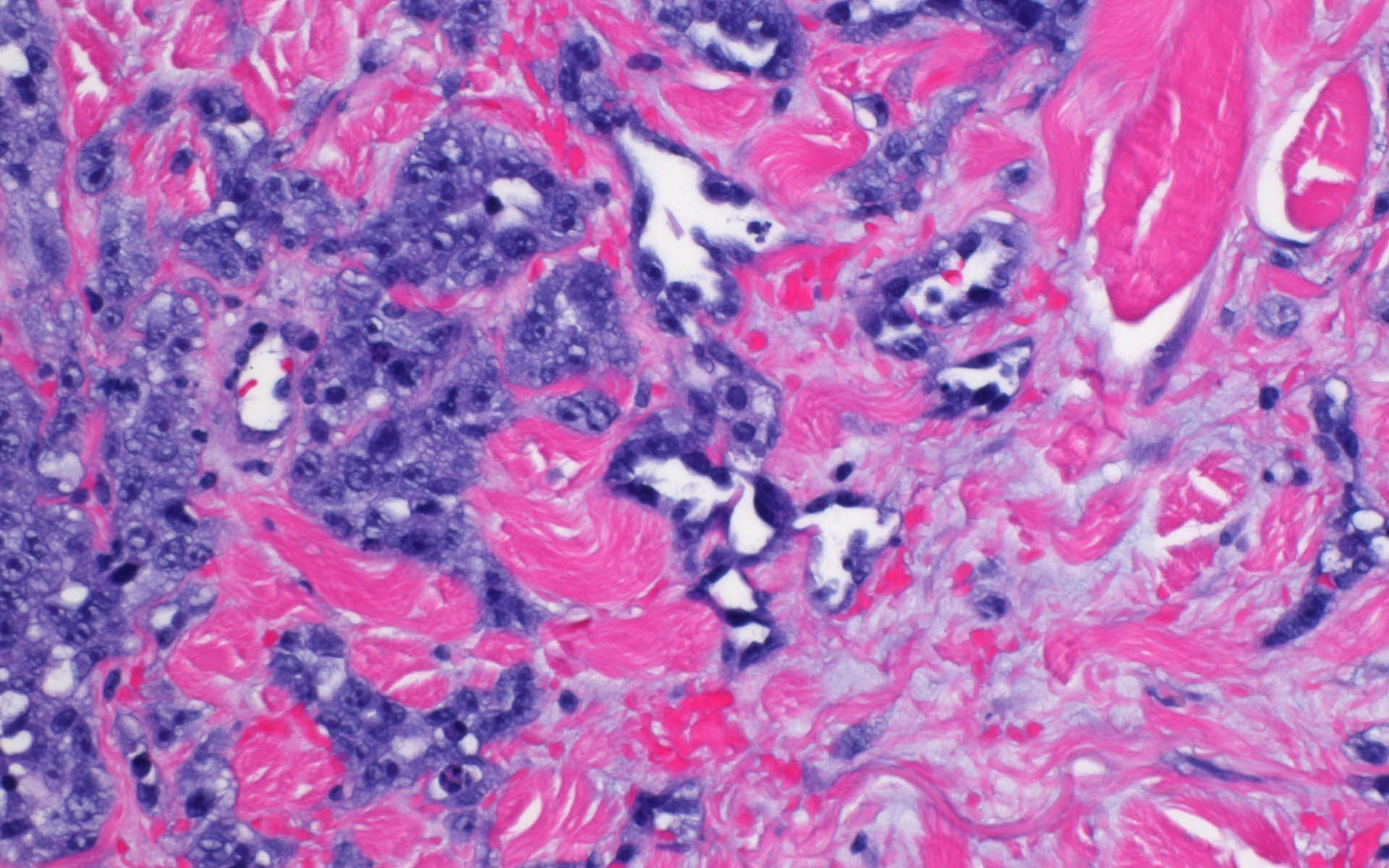Cutaneous Angiosarcoma in Solid Organ Transplant Recipients – Novel Case & Review of the Literature
Houston Methodist Hospital, Houston, TX
Meeting: 2022 American Transplant Congress
Abstract number: 1505
Keywords: Kidney transplantation, Malignancy, Outcome, Survival
Topic: Clinical Science » Organ Inclusive » 67 - Non-PTLD/Malignancies
Session Information
Session Time: 7:00pm-8:00pm
 Presentation Time: 7:00pm-8:00pm
Presentation Time: 7:00pm-8:00pm
Location: Hynes Halls C & D
*Purpose: Cutaneous angiosarcoma, a rare and extremely aggressive malignant neoplasm, has been described in fewer than twenty-five solid organ transplant recipients to date. Secondary, or radiation-associated, cutaneous angiosarcoma has proven even more extraordinary, with only three cases described in post-transplant patients. We detail, to our knowledge, the first reported case of secondary breast angiosarcoma in any transplant recipient.
*Methods: A 67-year-old female with a history of renal transplantation and invasive ductal cancer of the left breast (treated with breast-conserving surgery and adjuvant chemoradiation) presented 19 years post-transplant with left breast pain and an irregular papular skin lesion. Biopsy revealed epithelioid angiosarcoma and simple mastectomy was performed followed by systemic chemotherapy. Currently, the patient is alive with no evidence of recurrent disease. Literature review revealed twenty-three published cases of cutaneous angiosarcoma post-transplant, with the majority (83%) arising in renal transplant recipients and the remainder in liver (13%) and cardiac (4%) transplant recipients.
*Results: On average, angiosarcoma was detected seven years post-transplant, at a mean age of 53. Prevalence of angiosarcoma in post-transplant patients was not significantly associated with recipient gender (10 male vs. 7 female), living versus cadaveric donation, underlying etiology of organ failure, or length of disease prior to transplant. Of the 16 cases detailing the immunosuppressive regimens of these patients, the majority reported the use of tacrolimus-, azathioprine-, and/or prednisone-based regimens, with only one employing maintenance rapamycin. Mortality reached 92%, despite reductions in immunosuppression, with the majority of patients developing metastatic disease and living an average of only seven months following angiosarcoma diagnosis.
*Conclusions: Cutaneous angiosarcoma is an exceedingly rare post-transplant malignancy with poor survival outcomes and should be carefully excluded in all transplant patients with suspicious skin lesions, regardless of prior cancer history. Additionally, further studies are necessary to delineate the potential increased risk, heightened aggressiveness, and advanced time course of angiosarcoma in post-transplant patients.
To cite this abstract in AMA style:
Elzein SM, Caplan RR. Cutaneous Angiosarcoma in Solid Organ Transplant Recipients – Novel Case & Review of the Literature [abstract]. Am J Transplant. 2022; 22 (suppl 3). https://atcmeetingabstracts.com/abstract/cutaneous-angiosarcoma-in-solid-organ-transplant-recipients-novel-case-review-of-the-literature/. Accessed December 16, 2025.« Back to 2022 American Transplant Congress

